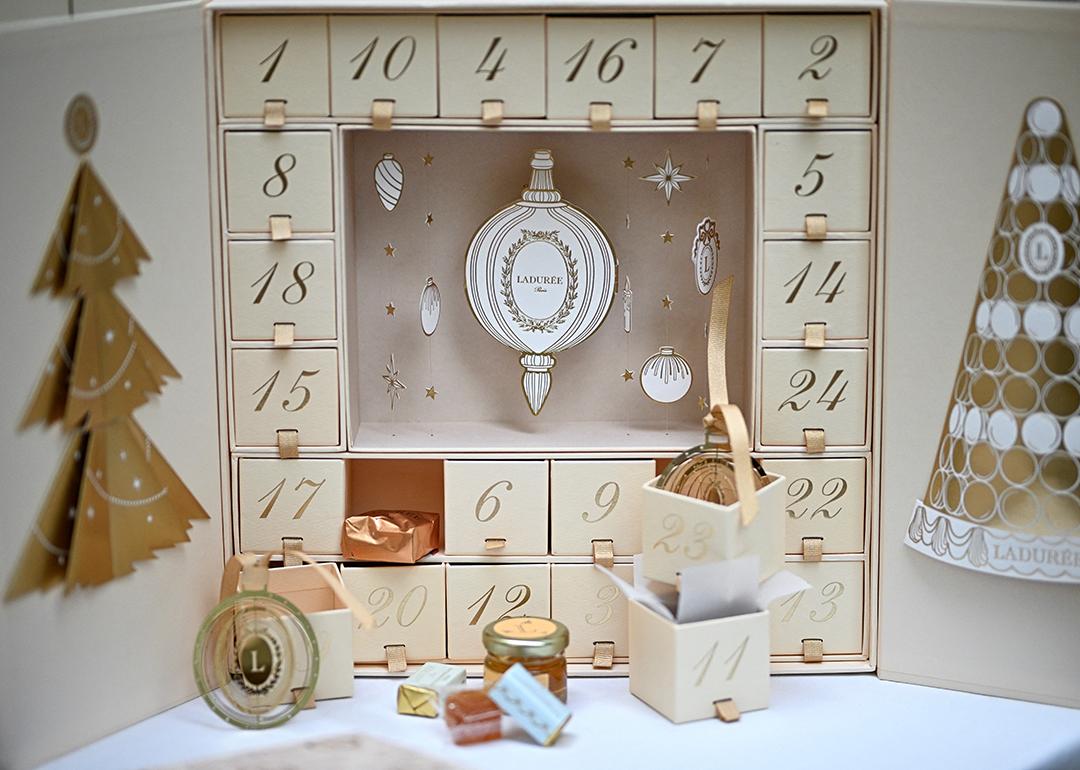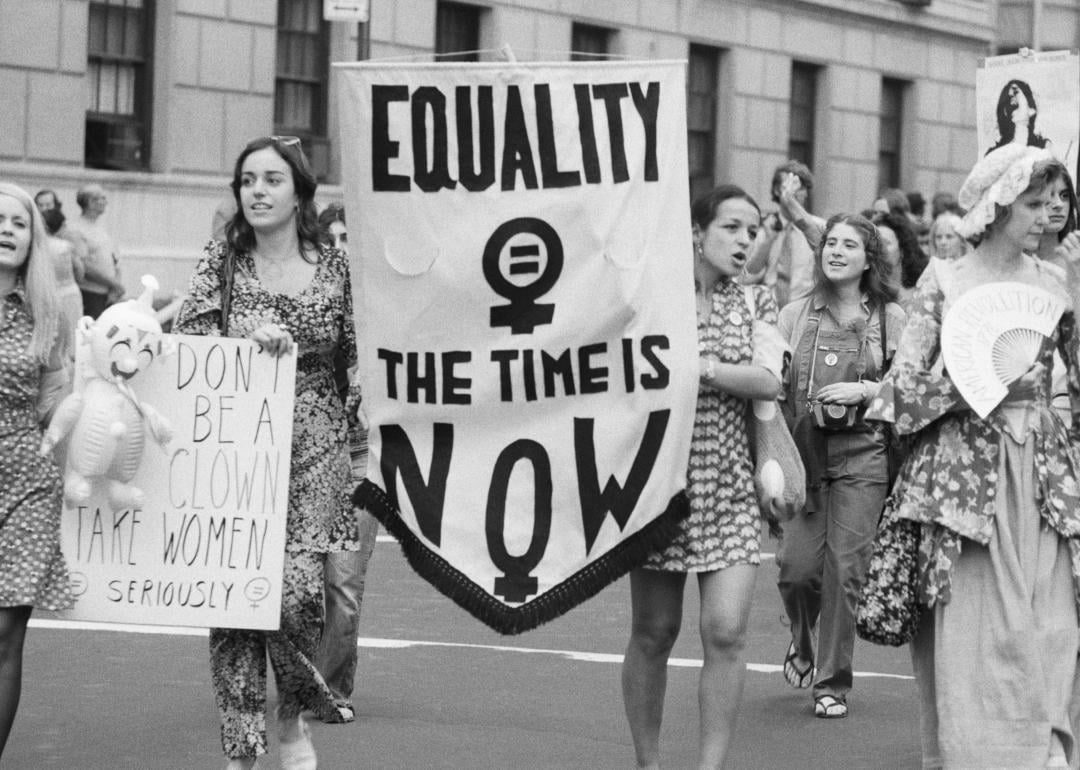
Chocolate, Chanel and cheddar: How Advent calendars became every brand’s favorite limited-edition platform
Chocolate, Chanel and cheddar: How Advent calendars became every brand’s favorite limited-edition platform
Last November, Burger King released a limited-edition Advent calendar priced at $19.54. It sold out in less than five minutes. This year, the fast-food giant is bringing it back, betting once again that nostalgic merchandise and daily reveals can drive something far more valuable than the calendar's modest price tag suggests.
Meanwhile, Vogue just unveiled its 2025 Festive Calendar for roughly $430, featuring over $2,100 worth of prestige beauty products, designer accessories, and a cashmere beanie.
Two calendars. Two wildly different markets and price points. Yet both are designed around the exact same consumer behavior mechanism. The real story is not what these calendars contain. It's what they're engineered to accomplish, Compartés reports.
According to Joel Yashinsky, chief marketing officer for Burger King US and Canada, the overwhelming response to last year's inaugural launch proved the calendar's true purpose.
"After the incredible response to our first-ever Advent Calendar last year, which sold out in less than five minutes, we knew we had to bring it back again this year with 12 new and exciting gifts designed to bring friends and families together," Yashinsky explained in the company's official announcement.
But bringing families together was only part of the strategy. The calendar's actual business objective was driving app downloads, boosting Royal Perks membership, and creating 12 consecutive days of consumer touchpoints during the critical holiday shopping period.
Each drawer was designed to trigger brand interaction and build purchase habits. The stated retail value of contents exceeded $100, turning the $19.54 asking price into what appeared to be an incredible deal. For a quick-service restaurant chain, this calendar functioned as a loyalty acquisition tool disguised as holiday nostalgia.
Vogue's approach serves an entirely different commercial goal. The publisher's luxury advent calendar was not built to drive app engagement or increase foot traffic. Its purpose was to capture a substantial slice of the high-margin holiday gifting market while reinforcing Vogue's position as the definitive authority on taste and curation.
"With this year's calendar, it was important to me and the beauty team that we were able to strike a lovely balance between established brands and exciting new product discoveries," said Jess Diner, Vogue's global beauty and wellness director, in the brand's promotional materials.
The calendar featured 32 hand-selected items, 29 of which were full-sized products from prestige brands. According to Vogue, they pledged £75,000 of proceeds to women's charities, layering social impact onto an already brand-elevating platform.
The calendar justified its premium price through artificial scarcity, editorial curation, and aspirational value. Laura Ingham, deputy director of Vogue's Global Fashion Network, emphasized this positioning strategy. "Fashion has always been at the heart of Vogue, so it felt essential that this year's festive calendar pay homage to the original Vogue HQ," Ingham stated.
This was not about building customer habits through repeated low-cost interactions. This was about building margin and cultural influence through a collectible luxury object.
Both brands recognized that the 24-day countdown structure provides more than just holiday-themed content. It provides infrastructure for entirely different commercial objectives, from customer retention to premium gifting, all wrapped in the same familiar format.
Understanding how a simple cardboard tradition evolved into a multi-category, limited-edition platform requires looking beyond the drawers themselves.
It requires tracing the shifts in psychology, scarcity, and cultural behavior that transformed the countdown format into one of the most powerful tools of the holiday economy. Only then does the scale of this retail evolution come into view.
The advent format that scaled origins and social logic
Advent calendars began as a way to mark time, not to sell it. The term derives from the Latin word for "arrival," and the tradition originally focused on anticipation and preparation for Christmas across four Sundays that shift year to year.
That moving target explains why modern advent calendars eventually locked into a fixed December countdown starting on the first of the month, a practical solution that made them reproducible and reusable across seasons.
The modern advent calendar traces back to early 1900s Germany, where publisher Gerhard Lang transformed a childhood memory into a commercial product. Lang's mother had sewn 24 cookies into a box lid, allowing him to eat one each day during Advent.
That simple countdown became the template for the first printed calendars, which Lang produced with illustrator Ernst Kepler. His innovation was the door mechanism, a format that remains standard more than a century later.
After World War II, the tradition leapt to the United States, propelled by a widely circulated 1953 photograph of President Dwight Eisenhower opening a calendar with his grandchildren.
That single image normalized the daily countdown for American households, turning a German cultural practice into a broader Western ritual.
By the 1970s, Cadbury began producing chocolate-filled versions that cemented the format as a retail staple, though it took nearly two decades before continuous production became commercially viable.
The format endures because it transforms anticipation into structure. "We all need the gift of time. And this is a way of slowing us down," consumer researcher Marcia Mogelonsky told NPR, explaining why the calendar "can be displayed all month, enjoyed with family and shared on social media."
That extended engagement window turned a simple countdown into something far more valuable: a 24-day content loop. What brands eventually recognized was that the advent calendar functions as a serialized product drop.
Unlike a single purchase transaction, the format creates 24 separate moments of discovery spread across nearly a month. Each day's reveal generates a small dopamine hit, keeping consumers engaged through repetition and anticipation.
This structure maps perfectly to social media algorithms, which reward consistent posting and sustained audience interaction. The calendar essentially provides a built-in content calendar, turning customers into advocates as they document daily unboxings across platforms like TikTok and Instagram.
And the data confirms this explosion. Google Trends shows searches for "advent calendar" have climbed steadily over the past decade, with sharp spikes each November.
On TikTok, the hashtag #adventcalendar has generated billions of views, with creators filming 24-part series that keep audiences returning throughout December. This unboxing culture transformed the calendar from a private household ritual into a public performance, amplifying brand visibility during the most competitive shopping period of the year.
While chocolate remains the dominant category, the advent calendar format has proliferated across nearly every retail vertical. By 2022, U.K. department store Selfridges offered 128 different calendars, more than double the previous year, according to Reuters.
Saks Fifth Avenue stocked 18 Advent varieties with prices ranging from $65 to $3,500. The explosion was not limited to luxury goods. Pet treats, craft beer, specialty cheese, beauty products, and even investment-grade watches now fill the 24 compartments that Gerhard Lang first popularized.
The question is no longer whether a brand should produce an Advent calendar. The question is how to use the format to accomplish specific business goals across vastly different industries.
Inside the Playbook of Brands: Mastering the Countdown Model
The calendar format may be universal, but the business strategy behind it shifts dramatically by category. What works for a beauty brand building aspiration has nothing to do with what works for a quick-service chain chasing loyalty metrics.
Beauty and luxury brands treat the calendar as a value stack play, where perceived worth matters more than actual cost. Vogue's 2025 calendar exemplifies this approach perfectly.
At roughly $430, the calendar contains products with a stated retail value exceeding $2,100. That five-to-one value ratio justifies the premium price while creating what appears to be an irresistible deal. Charity tie-ins further legitimize the cost.
"From my perspective, these items have a ‘wow’ factor for the gift recipient and across marketing channels," Amy Sveda, president of Luxy Hair, told Forbes. "They lend themselves to brand storytelling, and I believe some consumers crave that type of emotive connection more than exclusively making a transaction, especially during holiday season."
Furthermore, the scarcity created by limited inventory and waitlists drives urgency, while charity tie-ins provide ethical justification for premium pricing.
Lisa Tamburello, vice president of merchandising at Ulta Beauty, explained to Forbes that the competitive pressure has intensified. "Each year, we see unboxing content start earlier than the last, and calendars are often the first to go as guests count down to the holidays," she explained to Forbes.
Not to mention, charity tie-ins, like Vogue's £75,000 pledge to women's organizations, add ethical weight to purchases that might otherwise feel purely indulgent.
Quick-service restaurants and consumer packaged goods brands deploy a different strategy entirely. For them, the calendar functions as a customer relationship management asset disguised as merchandise.
Burger King's $19.54 calendar was designed to drive app downloads and boost Royal Perks membership, turning nostalgic tchotchkes into a CRM asset. The calendar's real business objective was behavioral modification through repeated digital engagement.
As brand strategist Reilly Newman told Yahoo, "You're able to get in this person's life and partake not only in a traditional kind of ritual if they do it every year, but also it's starting to form that habit where someone's even just thinking about that brand on a daily basis."
Then there are the category creators who turned novelty into mainstream retail. Annem Hobson launched her cheese advent calendar as a blog post after Googling whether one existed and discovering it didn't.
By 2016, she had secured 11,000 sign-ups in just three days, despite having no prior experience in the retail or dairy industries. "I just wanted to write a blog post," Hobson told Business Insider. That viral moment became a business that has now sold nearly 750,000 units across 16 countries.
Her success proved that novelty calendars could scale from a side hustle to mass retail, prompting major chains to quickly follow suit with their own versions.
Yet despite the proliferation across categories, chocolate advent calendars remain dominant. Not because they lack innovation, but because they deliver on the format's original promise: daily indulgence wrapped in anticipation.
Cadbury mass-produced the first chocolate calendars in 1971, and decades later, premium chocolatiers have proven consumers will pay significantly more for quality ingredients and thoughtful curation over cheap confections.
The format works because premium, handcrafted chocolate transforms the daily reveal into a sensory ritual rather than just unwrapping merchandise. When each compartment contains artisanal truffles or single-origin bars, the calendar becomes less about countdown mechanics and more about curated indulgence spread across 24 deliberate moments.
Tracking the Backlash Margin of Advent Calendars
Every format that becomes a marketing goldmine eventually earns its backlash. And Advent calendars are no exception.
In fact, the same social media amplification that drives calendar success can just as quickly destroy it when brands misjudge value or overpromise their capabilities. For that reason, creators with millions of followers now document every disappointing reveal, turning private frustration into public spectacle.
Chanel learned this the hard way in 2021 when its $825 Advent calendar became a cautionary tale. Customers who paid for luxury received stickers, a flip book, and a branded paperweight. TikTok amplified the disappointment, and the backlash was swift enough that the fashion house has not released another calendar since.
The incident exposed a critical vulnerability: When the perceived value collapses, no brand equity can protect against viral criticism.
That lesson clearly did not reach every brand. Sephora faced similar scrutiny in 2024 when customers redeemed 2,500 Beauty Insider points for a calendar that contained hair clips, scrunchies, and face tools instead of the skincare and makeup products they expected.
"Multiple people redeemed it, thinking it was going to have makeup, skincare, and bath products because that's what was advertised," one customer told Forbes. "And instead, it just had s—t like five-dollar accessories. I was one of those people [who] was scammed."
Content creator Trevor Barrett amplified the complaint to his one million TikTok followers. "Go search up this calendar, and you will see this girl is not exaggerating. It is literally a scam," he told his audience, according to Forbes.
These controversies reveal deeper tensions around how brands calculate value. Companies justify premium pricing by citing inflated manufacturer's suggested retail prices, but consumers increasingly question whether those MSRPs reflect actual market value.
The debate over full-size products versus miniatures intensifies this skepticism. A calendar containing 24 travel-size items may technically add up to hundreds of dollars in stated value, but if consumers would never purchase those products individually at full price, the mathematics feel deceptive.
This scrutiny has become unavoidable. "There's a lot of review and assessment associated with whether it is worth the price that they're paying," Ari Lightman, professor of digital media and marketing at Carnegie Mellon University, told Yahoo. "Just like a consumer would go online to look at a variety of reviews."
In other words, social media has transformed private disappointment into public accountability, with review culture forcing brands to deliver on every promise or face viral backlash. For brands that miscalculate, the calendar stops being a loyalty tool and becomes evidence of broken trust. And that scrutiny extends beyond content quality.
Sustainability concerns around single-use packaging and overconsumption create additional pressure, while legal questions about sweepstakes compliance and promotional regulations complicate attempts to build hype through giveaways or limited access. The Advent calendar format may be proven, but the margin for error has never been smaller.
What's Next For The Advent Calendar Economy
The backlash has not slowed the format's momentum. If anything, it has forced brands to refine their approach while recognizing that the countdown mechanic itself holds value far beyond December.
That realization has prompted experimentation across new occasions and categories, with brands testing countdown formats for Lunar New Year celebrations, summer product launches, and milestone marketing campaigns that have nothing to do with Christmas. Yet even as the Advent calendar format expands, its foundation remains remarkably consistent.
Helen Wing, U.K. head of innovation at Ipsos, explained the enduring appeal: "Chocolate advent calendars remain the go-to choice for consumers. They represent an affordable, timeless gift that is traditional and indulgent, as well as being suitable for all ages. However, beauty advent calendars are making significant inroads, particularly among Gen Z."
That generational shift signals not the replacement of chocolate but the format's ability to accommodate multiple commercial strategies simultaneously.
This versatility has transformed the advent calendar from seasonal novelty into what market analysts now call countdown commerce. The global advent calendar market was valued at $1.32 billion in 2024 and is projected to reach $2.47 billion by 2033, according to market intelligence firm MarketIntelo.
That trajectory reflects brands recognizing the format as more than seasonal inventory. It functions as year-round engagement infrastructure. "Advent calendars don't just have to be for Christmas," consumer researcher Marcia Mogelonsky told NPR. "Instead of one big gift, draw it out. Slow time down a bit by counting the days 'til this happens."
Digital integration is extending this logic further. Brands are embedding QR codes, augmented reality features, and exclusive app content within physical calendars, turning each compartment into a gateway for deeper interaction. These hybrid experiences satisfy both the tactile pleasure of daily reveals and the connectivity consumers now expect from every retail touchpoint.
Sustainability pressure is reshaping the format's physical expression as well. Reusable designs, FSC-certified materials, and refillable structures address environmental concerns while extending product lifespan beyond a single season.
Brands that solve for waste without sacrificing the unboxing experience will capture the next wave of conscious consumers who refuse to choose between indulgence and responsibility.
The Advent calendar's evolution from a chocolate tradition to a cross-category platform proves that the most durable retail formats are those flexible enough to serve radically different business objectives.
Whether the goal is driving app downloads for $19.54 or justifying a $430 luxury purchase, the countdown structure provides infrastructure that works at any price point and across any vertical. Brands that master this format gain something rare: a repeatable engagement mechanism that consumers actively anticipate rather than passively tolerate.
From chocolate to Chanel to cheddar, the 24-door countdown has proven itself as one of the most versatile limited-edition platforms ever created, and the brands that master its mechanics stand to capture not just December sales but a year-round engagement model that transforms how consumers interact with products, one carefully timed reveal at a time.
This story was produced by Compartés and reviewed and distributed by Stacker.



